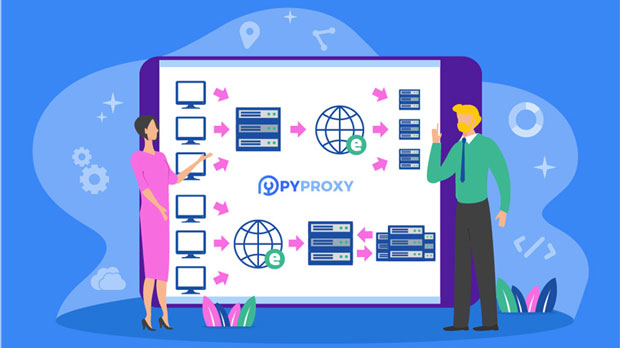Finding a reliable, up-to-date list of free socks5 proxies is crucial for many users, especially those concerned with privacy, security, and online anonymity. SOCKS5 proxies are often used for bypassing geographical restrictions, enhancing security while browsing, and maintaining privacy on the internet. However, the availability of free and functioning SOCKS5 proxies can be inconsistent, making it challenging for users to maintain continuous access. In this article, we will discuss how to find the latest free socks5 proxy lists, what to consider while using them, and the potential risks and limitations of relying on free proxies. Understanding SOCKS5 ProxiesBefore diving into how to find these proxies, it is essential to understand what SOCKS5 proxies are and why they are highly sought after. A SOCKS5 proxy works by routing your internet traffic through a third-party server, masking your real IP address. Unlike HTTP proxies, SOCKS5 can handle a wider range of traffic, including applications that are not web browsers, such as torrent clients and gaming services. SOCKS5 offers higher flexibility and security features compared to its predecessors, which is why many users prefer them. However, the main challenge of using free SOCKS5 proxies lies in the fact that they often come with limitations. These limitations could include slower speeds, unstable connections, or security vulnerabilities. While paid proxies generally offer better performance and security, free proxies remain a popular choice for users who need occasional anonymity or access to restricted content but cannot justify the cost of a paid service.Methods to Find free socks5 proxy ListsFinding updated and reliable free SOCKS5 proxy lists can be time-consuming, but there are several effective methods to locate these proxies.1. Use Proxy List WebsitesOne of the most common ways to find free SOCKS5 proxies is by using proxy list websites. These platforms regularly update lists of available proxies, and many allow users to filter results based on protocol (such as SOCKS5), country, and other parameters. These sites usually display essential details such as the IP address, port number, uptime, and sometimes response time. While these websites can be helpful, it is crucial to verify the quality of the proxies you find.2. Join Online Forums and CommunitiesThere are many online forums and communities dedicated to discussions about proxies, VPNs, and internet privacy. Many of these forums feature active users who share their experiences and frequently update each other with new proxy lists. Reddit, for instance, has subreddits related to privacy and networking, where users often post fresh SOCKS5 proxy lists. Additionally, online privacy and cybersecurity forums may also have sections where users contribute updated proxy information.3. Search for Updated Proxy DatabasesSome websites and platforms specifically maintain large databases of proxies, often including SOCKS5 proxies. These databases are regularly updated and can be searched for the latest proxy servers. While some of these sites offer paid services, many provide free access to limited proxy databases, which can be useful for finding recent SOCKS5 proxies. You can find these databases through search engines or privacy-related blogs.4. Leverage Open-Source ToolsFor those with technical skills, using open-source tools to scrape for SOCKS5 proxies from public sources can be an efficient approach. GitHub repositories often contain scripts and tools that can be used to collect proxies from various sources. These tools can automate the process of searching and compiling lists of proxies, saving time and effort. However, it is important to use these tools responsibly, as scraping websites without permission can violate terms of service and may lead to legal issues.5. Check Public Proxy Sharing WebsitesCertain websites and platforms allow users to share proxies freely. These platforms usually display a list of public proxies, which may include SOCKS5 proxies. These lists are often generated by community contributions, so the quality and reliability of the proxies can vary. It is essential to check how often these lists are updated and verify the authenticity of the proxies before using them.Considerations When Using Free SOCKS5 ProxiesWhile it is possible to find free SOCKS5 proxies, users should be aware of several important factors before relying on them.1. Security and Privacy RisksFree SOCKS5 proxies often pose significant privacy and security risks. Since many free proxies are hosted by anonymous individuals or unknown organizations, there is a possibility that these proxies may log your internet activity or even inject malicious content into your traffic. This can compromise your privacy and security. Always ensure that the proxies you use are trusted, and avoid entering sensitive information like passwords and credit card details while connected to a free proxy.2. Unreliable PerformanceOne of the primary downsides of using free SOCKS5 proxies is the unreliable performance. Free proxies may suffer from slow speeds, intermittent connection issues, and high latency. Since they are provided for free, many users share the same proxy, leading to congestion and reduced performance. For tasks that require high-speed internet or low latency, such as streaming or gaming, a free SOCKS5 proxy may not be suitable.3. Proxies May Be BlockedMany websites and online services actively block traffic coming from known proxy servers, including free SOCKS5 proxies. This is especially true for websites that are highly protective of user data, such as banking sites or streaming services. Therefore, it is essential to keep searching for new proxies and switch to different ones frequently. The use of free proxies may also lead to CAPTCHAs or temporary blocks when browsing certain websites.4. Limited Support and UpdatesFree SOCKS5 proxies usually lack customer support and may not be regularly updated. As a result, users may find that the proxies they are using stop working without prior notice. Regular maintenance and updates are often a feature of paid proxy services, but with free proxies, you are reliant on the community for updates. This means that finding fresh, working proxies is an ongoing challenge.Alternatives to Free SOCKS5 ProxiesIf you find that free SOCKS5 proxies are not meeting your needs or you are concerned about the risks, there are alternative options to consider.1. Paid SOCKS5 Proxy ServicesPaid SOCKS5 proxy services offer many advantages over free proxies, such as more reliable performance, better security, and regular updates. These services often come with customer support and provide greater control over proxy settings, ensuring a better user experience overall. While there is a cost involved, the investment can be worthwhile for those who require consistent and high-quality proxy access.2. VPN ServicesFor many users, a VPN (Virtual Private Network) can be a good alternative to SOCKS5 proxies. VPNs encrypt all internet traffic and route it through a secure server, providing enhanced privacy and security. Many premium VPN services also allow you to choose different server locations, similar to how proxies work. While VPNs are typically more expensive than free proxies, they offer higher reliability and security.ConclusionFinding the latest free SOCKS5 proxy lists can be a valuable tool for maintaining online anonymity, bypassing geo-restrictions, or enhancing privacy. However, users must be aware of the risks and limitations associated with free proxies, including privacy concerns, poor performance, and the potential for being blocked by websites. By utilizing proxy list websites, joining online communities, and considering the use of open-source tools, users can stay updated with the latest free SOCKS5 proxy options. For those who require more reliability, security, and performance, paid services or VPNs may be a better choice. Always exercise caution when using free proxies and prioritize your privacy and security.
Dec 27, 2024
![arrow]()



















































